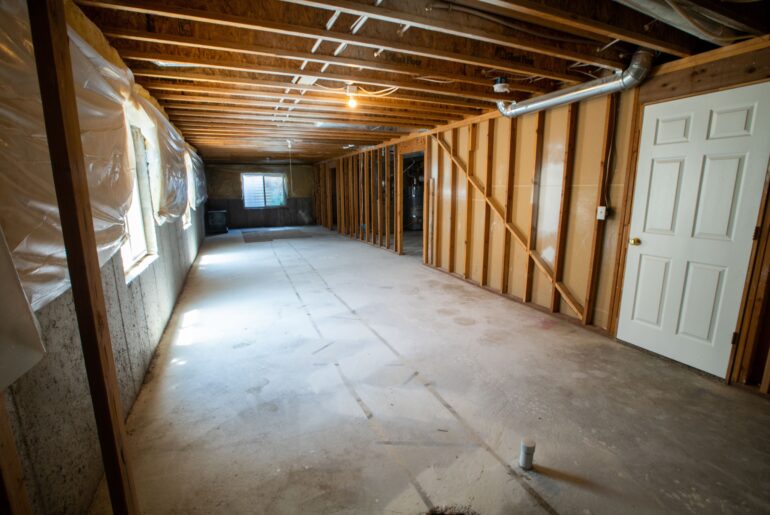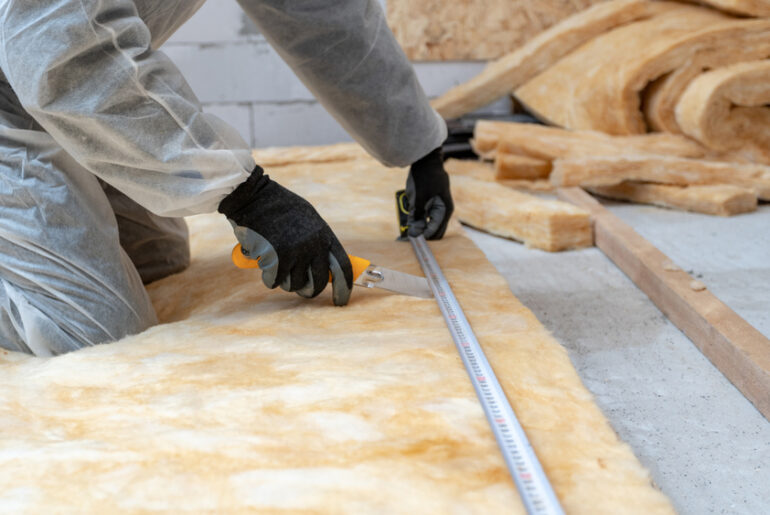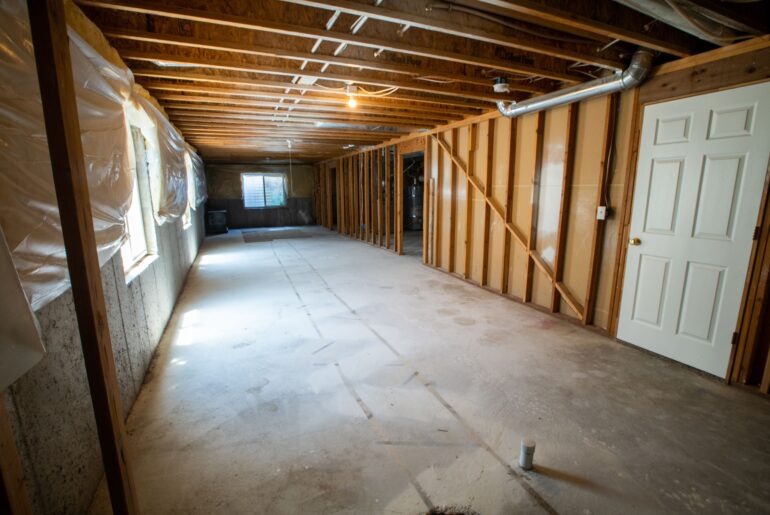If you are refinishing your basement to turn it into usable living space or you are just trying to improve your monthly utility bill, adding insulation to the walls may be at the top of your to-do list.
Adding insulation can make the space feel warmer, allowing you to turn it into a movie room or spot for your teens to hang out. Plus, the addition of insulation can offer a bit of soundproofing so the baby can sleep through game day!
Once you’ve decided insulation is the way to go, you may wonder if fiberglass is a good option for your basement.
Is Fiberglass a Good Choice For Basement Walls?
Insulating a basement is not quite the same as insulating the upper floors in your home. Because the basement is underground, there is a difference in humidity to contend with. This added humidity means you can’t treat basement walls like you do “above grade” walls.
The concrete used to create the basement can act as a sponge and suck up moisture from the ground — leading to mold issues inside the home. The mold can attach and grow on your insulation if you aren’t particular about its installation.
In general, fiberglass is not the best choice when insulating a basement as it is not moisture resistant. If you absolutely must use fiberglass, you need to ensure that there is space left between the insulation and the concrete walls. If you don’t leave the space, the concrete will suck up water from outside, transfer it to the fiberglass insulation, and you’ll end up with a mold or mildew problem.
You can add fiberglass insulation to your basement ceiling, but you may want to ensure that there is a vapor barrier if you’ve noticed moisture in your basement before.
Faced vs Unfaced Fiberglass In Basement Walls: Which One to Choose
The difference between faced and unfaced fiberglass insulation is whether or not a vapor barrier has been added to the batt. Unfaced insulation will simply be a batt of fiberglass all the way through. Faced insulation has a layer of kraft paper, aluminum, or some other material on one side of the fiberglass.
If you were going to add fiberglass insulation to basement walls, faced insulation would be the safest bet. The facing works to keep moisture out of the fiberglass, thus preventing mold or mildew from taking root.
Remember: if you are stacking your batts of fiberglass to increase the R-value, you do not want the vapor barrier to be in the middle of the fiberglass batts.
Batts vs Loose Fill Fiberglass For Basement Walls?
Batts of fiberglass insulation are the most commonly used type of insulation in homes, both by contractors and those DIYing their insulation. It’s easy to install and fits into wall cavities when the walls are unfinished.
Loose fill, as the name implies, is an unstructured variety of fiberglass insulation. It needs to be blown into the wall cavities, which is typically done by a contractor with a special piece of equipment. A mesh layer may be added over the blown-in fiberglass to keep it in place.
While loose fill is a great choice for rooms with finished walls because you can add it without tearing down all the drywall, using loose fill fiberglass insulation in your basement walls is not recommended. With loose fill, there is no vapor barrier, meaning the concrete’s moisture will seep into your fiberglass insulation.
If you want to add loose fill insulation to your basement walls, cellulose is a better choice than fiberglass. Cellulose fairs better against moisture — especially if it is densely packed within the walls.
Remember: Loose-fill insulation will settle over time, eventually leading to gaps at the top of your walls.
R-value
R-values are used to calculate insulation ratings, and they are calculated per inch of thickness. It describes how well insulation can prevent heat from entering or leaving your home. The type of material, thickness, and density of the insulation all affect the R-values. Generally speaking, a home with a greater insulation R-rating will have better climate control and energy efficiency.
While keeping in mind that different insulation manufacturers may have slightly different R-values, fiberglass batt insulation generally falls between R2.9 and R3.8. Loose fill, on the other hand, is generally rated between R2.2 and R2.9.
Cost
Remember, cost estimates vary depending on where you live in the country and who is installing your insulation. In general, fiberglass batting will have an upfront that falls somewhere between $0.64 and $1.20 per board foot. While loose fill fiberglass typically costs between $0.50 and $1 per board foot.
While up front, it appears that loose fill is the cheaper option, but remember, loose fill settles over time and will require maintenance to maintain the initial R-value. Since fiberglass batts do not settle in the same way, the cost between the two becomes more even.
Installation Process
Installing batt insulation is relatively straightforward. Unroll the batt, cut it to fit, and place flush between the studs. You can staple it in place to keep it from shifting, and you should fix it tightly around cables, boxes, or other obstructions.
Installing loose fill is best left to professionals. The insulation installers will use an industrial blower which is fed fiberglass that blows out of the long tube into the waiting cavity.
Remember: fiberglass can irritate the skin, eyes, and lungs. It is necessary to wear proper protective gear when working with this type of insulation.
Are There Better Alternatives to Fiberglass For Basement Walls?
There are three insulation alternatives that will work quite well in your basement walls: cellulose loose fill, spray foam, or rigid foam boards.
As discussed above, cellulose is not very susceptible to moisture when densely packed. Plus, if it is treated with borates, it is also insect and vermin resistant.
Spray foam is a great option for basement walls because it creates an barrier that will prevent the cold air from entering your space. It is mold and mildew-resistant because it doesn’t retain moisture. Plus, if applied correctly, it will form a seal that creates energy efficiency, reduces drafts, and keeps cool air from seeping into your basement. If you use open cell spray foam, you’ll also benefit from its noise-reducing qualities.
Rigid panel foam boards can be used in any part of the home, including the basement. They are made from polystyrene, polyisocyanurate, or polyurethane.
Most foam boards are water-resistant limiting moisture buildup which is vital in a basement. The resistance to moisture prevents mildew and mold growth. If properly installed, the foam boards will create an air barrier improving energy efficiency. However, the boards must be accurately cut to fit and taped at the joints to ensure no air leaks.
Should You Use Fiberglass For Basement Walls?
No, fiberglass insulation is not the best choice for basement walls. The moisture that collects in basements is likely to lead to mold or mildew problems. Whether using batts or blown-in fiberglass, you will need to maintain a gap between any basement walls and the insulation to stop moisture transfer.
There are several options that are better suited to your basement walls, and while they may not be as inexpensive, they are less likely to give you mold problems in the long run. If you are looking to install basement insulation yourself, the best choice is probably rigid panel foam boards. If you are hiring experts to insulate your basement, spray foam is an excellent option.





